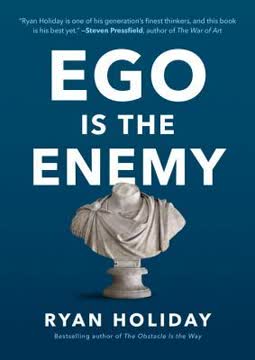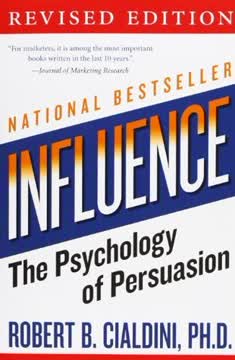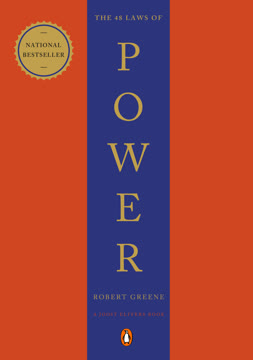Key Takeaways
1. שלוט באמנות הרמזים כדי לעקוף התנגדות
"הרמזים מאפשרים לך לעקוף את ההתנגדות הטבעית של אנשים, שכן הם נראים כאילו הם מקשיבים רק למה שצמח בתוכם."
הצעה עדינה היא עוצמתית. הרמזים מאפשרים לך לשתול רעיונות במוחות של אנשים מבלי לעורר את ההגנות שלהם. על ידי מתן הצעות בעקיפין, אתה מאפשר למטרה להאמין שהרעיונות הם שלה, מה שהופך אותם ליותר פתוחים. טכניקות כוללות:
- השארת רמזים עדינים במהלך שיחה לא פורמלית
- שימוש בשפה מעורפלת שניתן לפרש בדרכים שונות
- עשיית הערות או מחוות "מקריות" שמעבירות משמעויות חבויות
- letting silence and pauses speak volumes
הזמן הוא קריטי. הרמזים היעילים ביותר נעשים כאשר המטרה רגועה או מוסחת. מפגשים חברתיים, שיחות ידידותיות ופעילויות משותפות מספקות הזדמנויות אידיאליות להכניס הערות רמזיות מבלי שיבחינו בכך.
2. צור צורך על ידי עוררות חרדה ואי נחת
"חרדה, תחושת חוסר וצורך, היא הקודמת לכל רצון."
נצל את הריק הפנימי. רוב האנשים סובלים מחוסר ביטחון בסיסי ורצונות לא ממומשים. על ידי תזכורת עדינה למטרות על מה שחסר להם או עוררות חרדה לגבי המצב הנוכחי שלהם, אתה יוצר צורך שאתה יכול למלא. טכניקות כוללות:
- רמזים על הזדמנויות שהוחמצו או פוטנציאל לא ממומש
- השוואת המטרה לרעה לא לטוב
- תזכורת לערכים מהעבר שהם זנחו
- הצעת חיי היום-יום שלהם כחסרי ריגוש או משמעות
הצע את הפתרון. ברגע שהעוררת אי נחת, הצג את עצמך כתשובה לצרכים החדשים שהבינו. זה גורם למטרה לראות אותך כמושיע שלהם, ומקבלים בברכה את מה שיש לך להציע.
3. הופע כאובייקט רצוי כדי להגדיל את ערכך
"אנחנו רוצים את מה שאחרים רוצים."
צור הילה של רצוי. אנשים נמשכים באופן טבעי למה שאחרים מוצאים אטרקטיבי. על ידי הופעה פופולרית ונחשקת, אתה מגדיל את הערך הנתפס שלך והופך ליותר מושך. אסטרטגיות כוללות:
- הקפת את עצמך במעריצים
- רמזים על כיבוש או מערכות יחסים מהעבר
- יצירת תחרות או משולשי רצון
- שמירה על אווירה של מסתורין ובלתי נגישות
נצל הוכחה חברתית. כאשר אחרים נראים כנמשכים אליך, זה מעורר אינסטינקט תחרותי במטרה שלך. הם ירצו להחזיק במה שאחרים חומדים, מה שמקל על ההחדרה שלך.
4. שלח מסרים מעורבים כדי ליצור סקרנות ופיתוי
"שילוב של תכונות מציע עומק, שמרתק גם כאשר הוא מבלבל."
היה פרדוקס. בני אדם נמשכים למה שהם לא יכולים לקטלג בקלות. על ידי הצגת תכונות שנראות סותרות, אתה הופך לפאזל מעניין שאחרים רוצים לפתור. דוגמאות:
- שילוב של קשיחות עם רוך
- ערבוב של תום עם חושניות
- איזון בין אינטליגנציה לספונטניות
- החלפת חום מעורבב עם ריחוק קר
שמור עליהם מנחשים. המפתח הוא לא להיות צפוי לחלוטין. ברגע שהמטרה שלך חושבת שהיא הבינה אותך, גלה צד חדש של האישיות שלך שמפתיע אותם.
5. בחר את הקורבן הנכון להחדרה מוצלחת
"הקורבן המושלם יש לו תכונה טבעית שמושכת אותך."
בחירת המטרה היא קריטית. לא כולם רגישים באותה מידה להחדרה. חפש אנשים ש:
- עוברים תקופה מעברית או פגיעה בחיים
- יש להם צרכים או רצונות לא ממומשים שאתה יכול לנצל
- יש להם תכונות שמסקרנות או מושכות אותך באמת
- מראים סימנים של שעמום או חוסר שביעות רצון מהמצב הנוכחי שלהם
הימנע מהמטרות הלא נכונות. הימנע מאלה ש:
- מרוצים מדי או שבעי רצון
- ציניים מדי או מיואשים
- רגשית לא זמינים או סגורים
זכור, העניין הכנה שלך במטרה יזין את מאמצי ההחדרה שלך, מה שהופך אותם ליותר משכנעים ויעילים.
6. צור תחושת ביטחון שקרית באמצעות גישה עקיפה
"בהתחלה לא צריך להיות שום דבר מהחודר במנח שלך."
נטרל דרך חברות. גש למטרה שלך בעקיפין על ידי הקמת מערכת יחסים לא מאיימת קודם. זה מוריד את ההגנות שלהם ומאפשר לך לאסוף מידע יקר על רצונותיהם וחולשותיהם. טקטיקות כוללות:
- הצגת עצמך כחבר או סוד
- הבעת עניין אמיתי בחיים ובמחשבות שלהם
- הצעת תמיכה או עזרה ללא ציפיות
- הגדלת אינטימיות בהדרגה דרך חוויות משותפות
סבלנות היא המפתח. אפשר ליחסים להתפתח באופן טבעי, מבלי למהר או לדחוף ליותר ממה שהמטרה מוכנה לתת. זה בונה אמון ומקנה להחדרה שלך להיראות כהתקדמות טבעית ולא כתוכנית מחושבת מראש.
7. נכנס לרוחם כדי להוריד הגנות ולזכות באמון
"שחק לפי הכללים שלהם, תהנה ממה שהם נהנים, התאם את עצמך למצב רוחם."
היה המראה שלהם. אנשים הם מטבעם נרקיסיסטים ונמשכים לאלה שמשקפים את התכונות שלהם. על ידי התאמה לאישיות, תחומי עניין וערכים של המטרה שלך, אתה יוצר קשר חזק. זה כולל:
- חיקוי סגנון התקשורת שלהם ושפת הגוף
- שיתוף התלהבותם והשתתפות בתחביביהם
- אישור השקפת עולמם ודעותיהם
- התאמה למצב הרגשי ולרמת האנרגיה שלהם
השפעה הדרגתית. ברגע שנכנסת לחלוטין לרוחם וזכית באמונם, תוכל להתחיל לעצב בעדינות את מחשבותיהם ורצונותיהם. זה מאפשר לך להנחות אותם להחדרה שלך מבלי שהם ירגישו מנוצלים או לחוצים.
Last updated:
FAQ
What's The Art of Seduction by Robert Greene about?
- Exploration of Seduction: The book delves into the psychology of seduction, presenting it as a powerful form of influence and control. It synthesizes historical examples and literary references to illustrate timeless strategies.
- Character Archetypes: Greene identifies ten archetypal seducers, such as the Siren and the Rake, each embodying different seductive qualities. These serve as models for understanding attraction and manipulation.
- Seductive Maneuvers: The book outlines twenty-four specific maneuvers for seducing others, emphasizing patience, strategy, and emotional manipulation.
Why should I read The Art of Seduction by Robert Greene?
- Understanding Human Nature: The book provides insights into human desires and motivations, revealing how seduction operates on both conscious and unconscious levels.
- Practical Strategies: Greene offers advice applicable in various social situations, enhancing persuasive abilities and social skills in both romantic and professional contexts.
- Historical Context: Rich with historical anecdotes, the book connects timeless principles of seduction to contemporary life, making it relevant for modern readers.
What are the key takeaways of The Art of Seduction by Robert Greene?
- Power of Seduction: Seduction is portrayed as a subtle and effective form of power that can be wielded by anyone to gain influence in relationships.
- Emotional Manipulation: Creating feelings of desire, insecurity, and excitement is crucial for successful seduction, with an emphasis on insinuation and suspense.
- Self-Awareness: Greene stresses the need for self-awareness, encouraging readers to identify their seductive qualities and adapt their approach based on the target's desires.
What are the best quotes from The Art of Seduction by Robert Greene and what do they mean?
- "Seduction is the most subtle, elusive, and effective form of power.": This quote suggests that seduction operates beneath overt power dynamics, allowing influence without force.
- "The ability to delay satisfaction is the ultimate art of seduction.": It highlights the Coquette's strategy of creating desire through absence, intensifying longing.
- "Charm is seduction without sex.": Greene distinguishes charm from sexual seduction, indicating its effectiveness in creating attraction in social and professional contexts.
How does Robert Greene define seduction in The Art of Seduction?
- Seduction as Power: Greene defines it as a subtle, indirect form of power, contrasting with overt control, to achieve desires without confrontation.
- Psychological Manipulation: Seduction involves playing on emotions and desires through charm, attention, and emotional resonance.
- Art and Strategy: It is presented as both an art and a strategy, requiring careful planning and execution, akin to a game mastered with practice.
What are the different types of seducers described in The Art of Seduction by Robert Greene?
- The Siren: Uses allure and sensuality to captivate, embodying femininity and mystery.
- The Rake: Characterized by intense passion and desire, creating excitement and danger.
- The Coquette: Plays hard to get, using warmth and aloofness to heighten desire.
What are the phases of seduction outlined in The Art of Seduction by Robert Greene?
- Phase One: Create Temptation: Awaken desire by hinting at pleasures to come, stimulating curiosity.
- Phase Two: Lead Astray: Keep the target emotionally engaged and confused, creating unpredictability.
- Phase Three: The Precipice: Deepen emotional connection through extreme measures, solidifying the bond.
How can I apply the concepts from The Art of Seduction by Robert Greene in my life?
- Self-Reflection: Identify and enhance your seductive qualities to navigate social interactions effectively.
- Practice Emotional Manipulation: Use strategies to create emotional responses, making others feel special or desired.
- Adapt to Your Audience: Tailor your approach based on individual needs and desires, adjusting behavior to resonate.
What role does absence play in the strategies outlined in The Art of Seduction by Robert Greene?
- Creating Tension: Absence creates tension and longing, making the target yearn for the seducer's return.
- Psychological Manipulation: Induces insecurity and anxiety, prompting the target to pursue more aggressively.
- Reinforcing Desire: Absence reinforces desirability, leading to a more intense emotional connection upon reunion.
How does The Art of Seduction by Robert Greene address the concept of emotional highs and lows?
- Emotional Rollercoaster: Creating highs and lows keeps the target engaged and invested in the relationship.
- Intensity of Experience: Fluctuations intensify the experience, making the climax more rewarding.
- Dependency Creation: Alternating pleasure and pain fosters dependency, strengthening the bond.
What are some common pitfalls to avoid in seduction as outlined in The Art of Seduction by Robert Greene?
- Overexposure: Avoid becoming too familiar or predictable, maintaining mystery and intrigue.
- Neglecting Emotional Dynamics: Manage emotional highs and lows to maintain intensity in the relationship.
- Being Too Nice: Avoid being overly accommodating, as boldness and assertiveness are key to seduction.
How can one maintain the seductive atmosphere after the initial seduction according to The Art of Seduction by Robert Greene?
- Continuous Re-seduction: Introduce new experiences and surprises to prevent familiarity from dulling the relationship.
- Injecting Drama: Create tension or conflict to reignite the initial spark and keep the relationship dynamic.
- Avoiding Complacency: Engage the target's emotions and desires continually to preserve and enhance the seductive atmosphere.
Review Summary
אומנות הפיתוי זוכה לביקורות מעורבות, כאשר חלק מהקוראים משבחים את האנקדוטות ההיסטוריות ואת התובנות הפסיכולוגיות שבו, בעוד אחרים מבקרים את הטקטיקות המניפולטיביות המוצגות בו. הקוראים מעריכים את הניתוח המקיף של טכניקות הפיתוי ואת היישומים שלהן מעבר ליחסים רומנטיים. רבים מוצאים את הספר כמעניין ומעורר מחשבה, ומציינים את תועלתו בהבנת התנהגות אנושית. עם זאת, המבקרים טוענים שהספר מקדם מניפולציה לא אתית ואובייקטיביזציה. חלק מהקוראים מתקשים באורכו של הספר ובתוכן החוזר על עצמו, בעוד אחרים רואים בו מקור יקר ערך לצמיחה אישית ודינמיקה חברתית.
Similar Books























